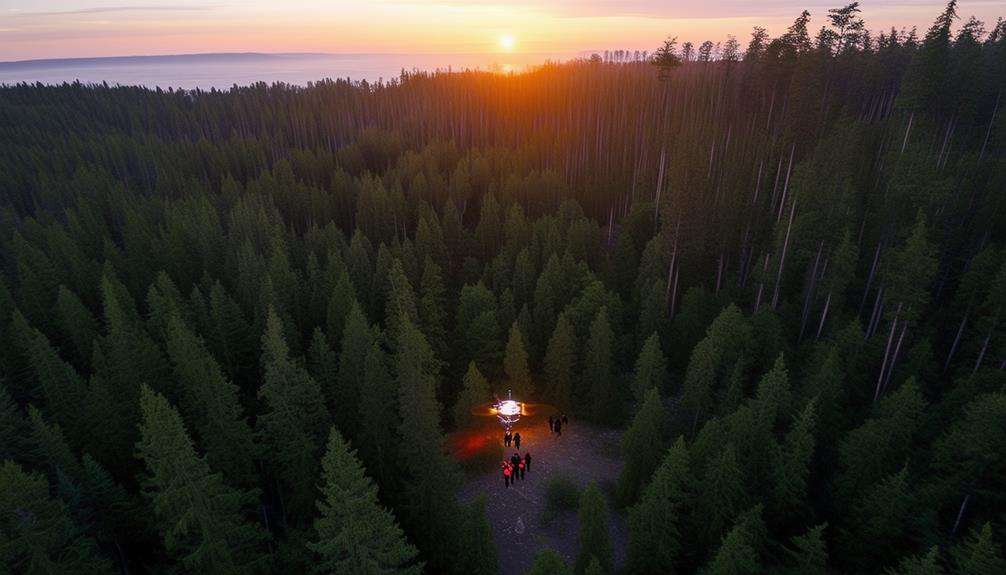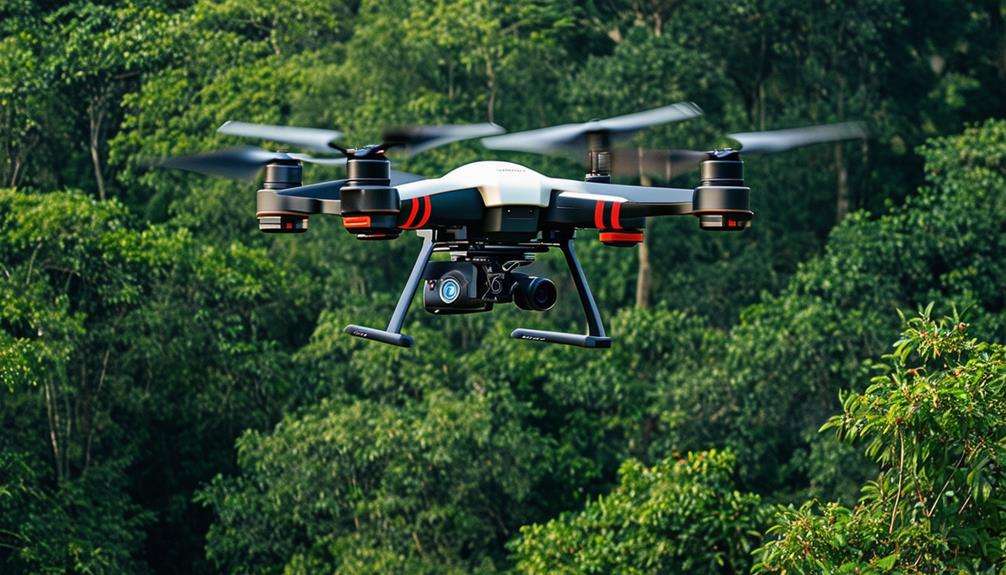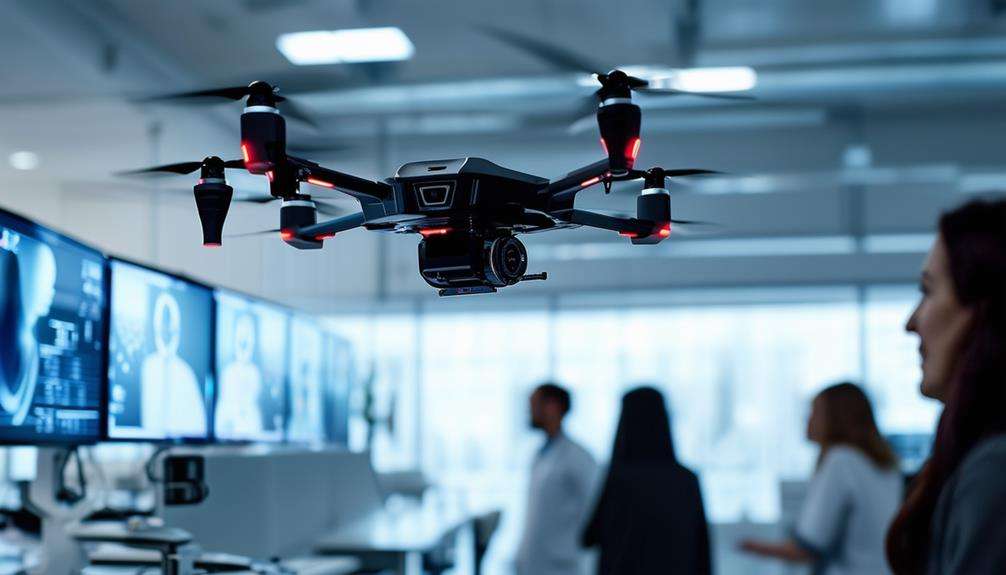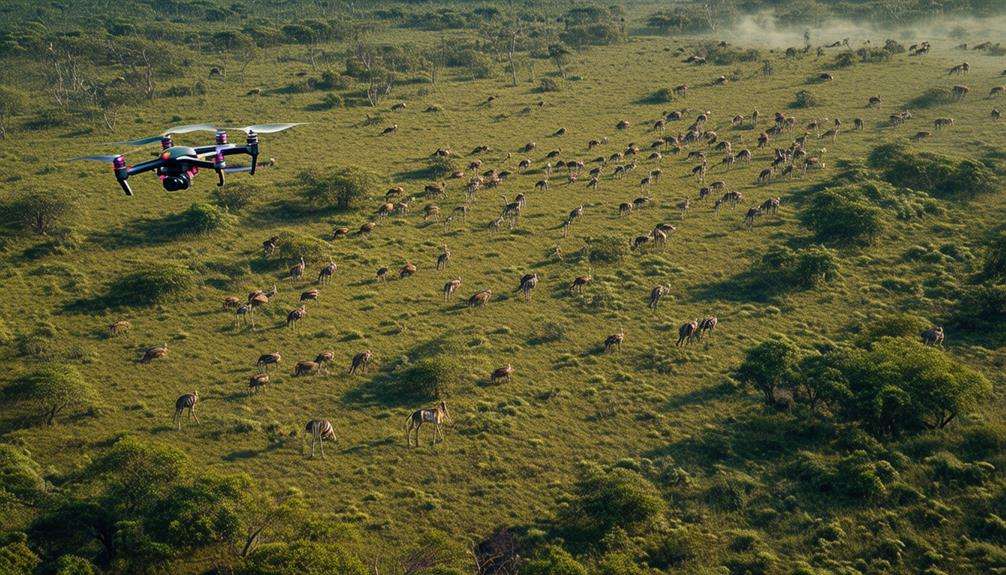From Hobbyist to Professional: The Types of Drones on the Market
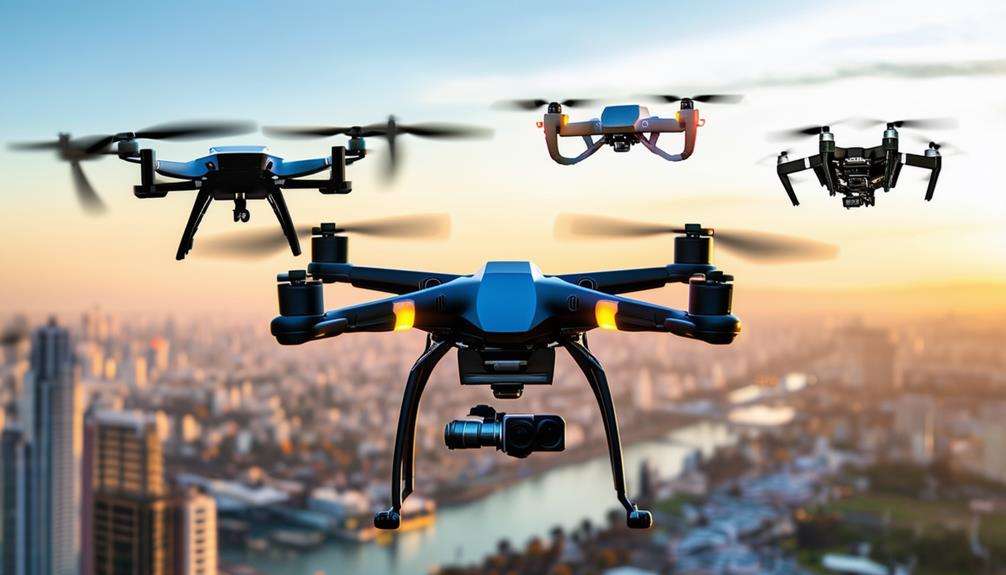
When you think about drones, you might picture a small toy buzzing around a park, but the spectrum is much broader. From mini and micro drones ideal for beginners to sophisticated camera drones used by professional photographers, the market offers a wide range of options tailored to various needs and skill levels.
You might be surprised to learn about racing drones designed for high-speed competitions or delivery drones that are transforming logistics. Curious to know which type of drone suits you best or how these advanced features enhance their capabilities? Let's explore further.
What Are Drones?
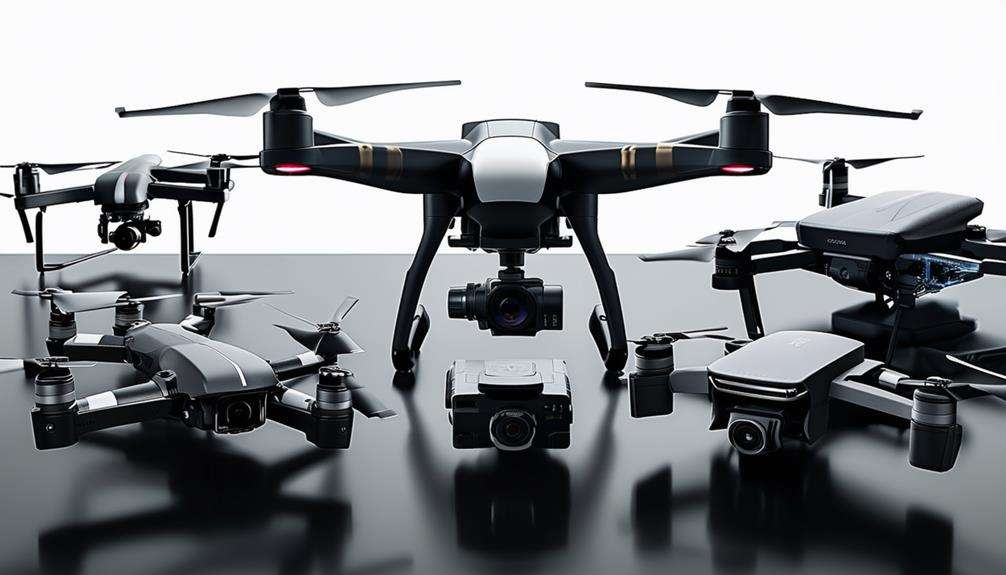
Drones, also known as Unmanned Aerial Vehicles (UAVs), are aircraft operated without a human pilot onboard, controlled remotely, or capable of autonomous flight. These versatile machines vary in size and purpose, from small consumer drones to larger professional systems. Many drones are equipped with cameras, capturing stunning aerial footage, a popular use among hobbyists and professionals alike.
Consumer drones have become increasingly sophisticated, featuring high-resolution cameras, GPS, and obstacle avoidance systems. These capabilities make them ideal for recreational photography, filmmaking, and surveying. Larger drones, used in fields such as agriculture and construction, offer greater payload capacities and longer flight durations.
Flight capabilities differ among drones, with some designed for short, rapid flights and others for extended missions. As drone technology evolves, potential applications expand in both consumer and commercial markets. Whether you're a hobbyist or a professional, there's a drone to meet your needs.
Mini and Micro Drones
Mini and micro drones are ideal for beginners or those seeking an easy-to-fly option for indoor use. These drones are lightweight, portable, and often feature user-friendly designs that simplify control. Additionally, their affordability ensures that you can learn to operate them without a significant financial investment.
Ideal for Indoor Use
For indoor flying, mini and micro drones offer exceptional maneuverability and ease of use in tight spaces. Thanks to their compact sizes and lightweight designs, these drones excel in confined areas like living rooms or offices. Mini drones, such as the DJI Mini 2 and Tello, are popular among beginners and recreational users who want to practice their flying skills indoors. These drones typically weigh under 200 grams, making them suitable for indoor flying without needing registration in many countries.
Micro drones, like the Blade Inductrix and Tiny Whoop models, are even smaller and more agile. Their tiny frames make them perfect for navigating through tight spaces, providing an excellent platform for honing your piloting skills. Whether you're looking to enjoy an FPV (First Person View) flight or improve your control, the responsiveness and agility of these drones are sure to impress.
In addition to their performance, the safety benefits of mini and micro drones are significant. Their lightweight nature reduces the risk of damage to both the drone and your indoor environment, ensuring a stress-free flying experience.
Beginner-Friendly Designs
If you're new to drones, beginner-friendly designs like mini and micro drones offer an easy and affordable entry point. Mini drones, typically weighing less than 250 grams, are perfect for beginners as they're often exempt from certain regulations. These drones usually feature altitude hold and headless mode, which simplify control for newcomers.
Micro drones are even smaller, often fitting in the palm of your hand. They're ideal for indoor flying practice, allowing you to develop your skills without needing a large outdoor space. These tiny drones are very affordable, with entry-level models starting around $20, making them accessible for hobbyists and beginners who want to learn the basics of drone flight without a significant financial investment.
Both mini and micro drones are excellent for learning before progressing to more advanced models. Their user-friendly designs and basic features provide a smooth learning curve, making them ideal for anyone looking to explore the exciting world of drone flying.
Affordability and Portability
When considering affordability and portability, mini and micro drones strike an excellent balance between cost and convenience. Mini drones, often priced under $250, are ideal for hobbyists and beginners. Their compact size and lightweight design, typically under 250 grams, make them highly portable and easy to transport.
Micro drones take portability further with their ultra-compact design, perfect for indoor flying and quick outdoor adventures. Despite their small size, these drones are feature-rich. For example, mini drones like the DJI Mini 2 come with advanced functionalities such as GPS, obstacle avoidance, and high-quality cameras. These features enable impressive aerial photography and videography, making them great for budding photographers and videographers.
Whether you're a beginner or seeking a convenient drone for travel, both mini and micro drones offer a user-friendly experience without breaking the bank. Their affordability and portability make them appealing options for anyone looking to explore the world of drones and capture stunning visuals.
Hobby Drones
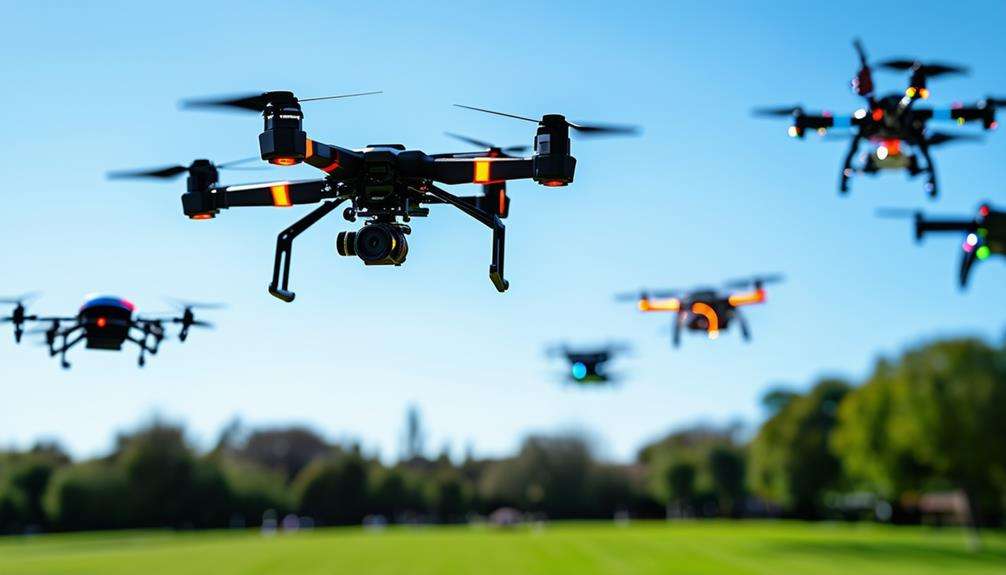
Hobby drones, designed for recreational use, offer an exciting entry point into the world of aerial photography and flight. These drones are typically small and lightweight, making them easy to fly, especially for beginners. Equipped with basic cameras, hobby drones allow you to capture photos and videos from a bird's-eye view without significant investment.
One of the biggest advantages of hobby drones is their affordability. Entry-level models start around $50 to $100, making them an excellent choice for newcomers. Despite their low price, these drones are packed with features that simplify flying, such as altitude hold, headless mode, and one-touch takeoff and landing.
Popular brands like DJI, Holy Stone, and Syma offer a range of options to suit different needs and preferences. Whether you're a curious beginner or a casual enthusiast, hobby drones provide the perfect blend of ease and enjoyment. If you're looking to explore drone flying, hobby drones are your gateway to the skies.
Camera Drones
Camera drones, equipped with high-resolution cameras and advanced imaging technology, allow for the effortless capture of stunning aerial photos and videos. These drones typically feature gimbals for stabilized footage and offer various shooting modes to enhance creative potential. Whether you're a hobbyist capturing scenic landscapes or a professional needing high-quality aerial footage, camera drones deliver exceptional image and video quality.
DJI drones, such as the DJI Mavic 3 Pro, set the industry standard in this category. Known for their superior camera quality and cutting-edge features, DJI drones are equipped with obstacle avoidance and autonomous flight capabilities. This allows users to focus on capturing the perfect shot while the drone manages the complexities of flying.
| Feature | Entry-Level Camera Drones | Professional-Grade Drones |
|---|---|---|
| Camera Quality | Basic | Advanced (4K/8K) |
| Stabilization | Limited | High (3-axis gimbals) |
| Autonomous Flight Modes | Few | Multiple |
Camera drones cater to a wide range of users, offering everything from basic models for beginners to advanced drones for seasoned professionals. High-end models like the DJI Mavic 3 Pro provide unparalleled image and video quality, along with intelligent features such as obstacle avoidance and autonomous flight, making them the top choice for capturing breathtaking aerial shots.
Racing Drones
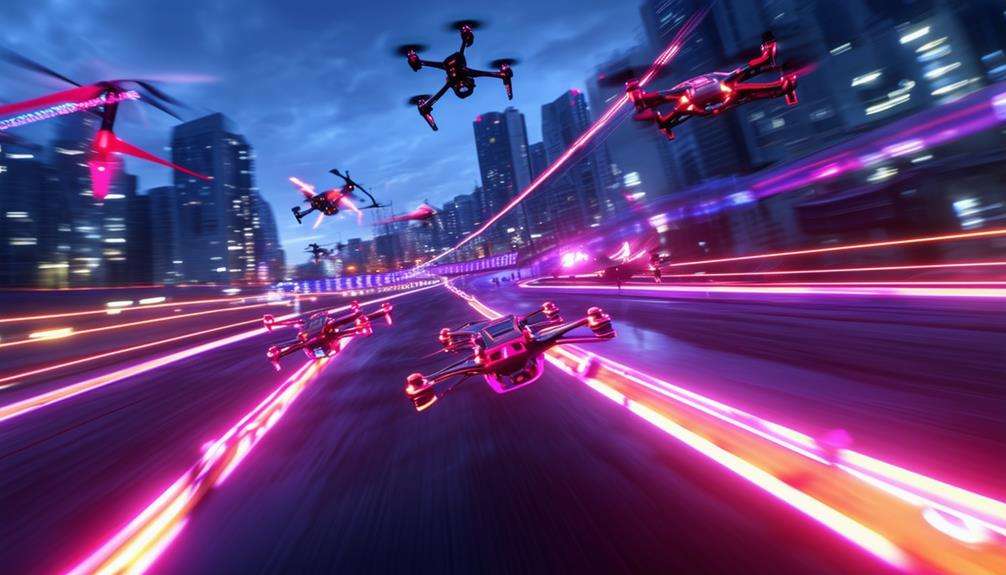
Speed and performance are crucial when it comes to racing drones. Enthusiasts often customize and upgrade their drones to stay competitive. Popular racing leagues around the world attract pilots eager to demonstrate their abilities.
Speed and Performance Metrics
Racing drones, engineered for adrenaline-pumping speed, can achieve astonishing velocities exceeding 100 mph. These First-Person View (FPV) drones are designed for peak performance, featuring lightweight and aerodynamic builds that enable exceptional agility in the air.
For those interested in competitive racing, events like the Drone Racing League (DRL) highlight the capabilities of these machines, requiring both speed and precision from their pilots.
To fully grasp the speed and performance metrics of racing drones, consider the following aspects:
- Speed: Racing drones can exceed speeds of 100 mph, ranking them among the fastest drones available.
- Maneuverability: Their lightweight and aerodynamic designs facilitate sharp turns and rapid directional changes, crucial for navigating complex race courses.
- FPV Systems: Equipped with real-time video feeds, pilots gain an immersive experience, viewing from the drone's perspective and reacting instantly to obstacles and competitors.
- Competitive Edge: In competitions like the Drone Racing League, pilots depend on quick reflexes and honed skills to outmaneuver opponents, making every split-second decision critical.
Customization and Upgrades
Optimizing a racing drone's performance begins with strategic customization and upgrades to essential components. High-speed motors are crucial, providing the necessary power to maximize speed. When combined with durable frames, they create a resilient structure capable of withstanding the demands of competitive racing.
Upgrading to advanced flight controllers is equally important. These components enhance the drone's stability and responsiveness, giving you a competitive edge in tight maneuvers and high-speed chases.
Quality FPV (First Person View) goggles are another valuable investment, offering real-time video transmission that immerses you in the flight experience and allows for precise control during high-speed races.
Popular Racing Leagues
After enhancing your drone's performance, you might be eager to test your skills in some of the world's top drone racing leagues. Here are a few you should know about:
- Drone Racing League (DRL):
- DRL showcases custom-built racing drones and hosts events in diverse and challenging indoor and outdoor locations. The high-speed action and intricate courses provide a thrilling experience for both pilots and spectators.
- International Drone Racing Association (IDRA):
- IDRA organizes global drone racing events, attracting elite pilots. Their flagship event, the IDRA World Drone Prix in Dubai, offers substantial cash prizes and highlights the best in drone racing talent.
- MultiGP:
- This league caters to drone racing enthusiasts of all skill levels. MultiGP's structured format allows you to compete locally, improve your skills, and qualify for larger, prestigious events.
- Local and Regional Leagues:
- Smaller, local racing leagues are excellent starting points for honing your skills, building a network, and gaining experience before advancing to larger competitions.
Dive into these racing leagues to join a community of passionate pilots eager to compete and share their expertise.
Professional Drones
Are you in search of drones with advanced features for professional applications such as aerial photography and industrial inspections? Consider exploring the DJI Mavic 3 Pro and Autel Robotics Evo Lite+.
These high-end drones come equipped with top-tier cameras, often delivering stunning 6K resolution. With flight times extending up to 40 minutes, they allow you to capture extensive footage without frequent interruptions.
Professional drones also feature advanced flight modes, making them versatile tools for industries such as filmmaking, agriculture, construction, and infrastructure inspection. The DJI Mavic 3 Pro and Autel Robotics Evo Lite+ offer unparalleled stability and precision, ensuring professional-grade footage suitable for commercial use.
Beyond capturing beautiful images, these drones are essential for gathering precise data and conducting detailed analyses. Whether you're mapping large agricultural fields or inspecting tall infrastructure, these drones provide the reliability and quality you need.
Operating these sophisticated devices does require a higher level of expertise, but the results are well worth it. Investing in a professional drone can elevate your projects to new heights, making them indispensable tools across various commercial sectors.
Delivery Drones
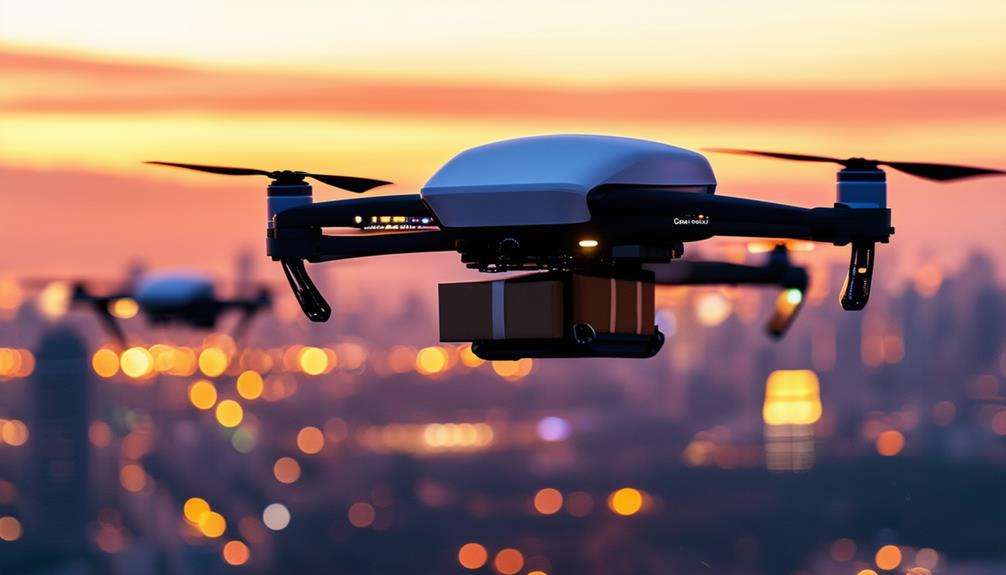
Delivery drones are at the forefront of transforming the logistics industry, offering unmatched speed and efficiency for package transportation. These innovative devices are engineered to deliver goods to specific locations, positioning them as a crucial component in the future of deliveries.
Delivery drones vary in size and payload capacity based on the items they're intended to transport. Companies such as Amazon Prime Air and UPS are actively exploring their potential to facilitate rapid and efficient deliveries. Outfitted with advanced technologies like GPS navigation and obstacle avoidance systems, these drones ensure safe and accurate deliveries.
The adoption of delivery drones presents several benefits:
- Speed: Significantly reduces delivery times by avoiding road traffic.
- Cost-Effective: Lower operational costs compared to traditional delivery methods.
- Accessibility: Capable of reaching remote or difficult-to-access areas.
- Efficiency: Reduces human error and optimizes delivery routes.
Integrating delivery drones into the logistics sector promises a future of faster, more reliable, and cost-effective delivery solutions. Utilizing advanced technologies, these drones enhance delivery operations and pave the way for a more efficient and innovative logistics landscape.
Agricultural Drones
Agricultural drones are transforming the farming industry by providing real-time data that enhances crop management practices. Equipped with advanced sensors and cameras, these drones monitor crop health, irrigation needs, and pest infestations efficiently across large farming areas. This technology offers invaluable insights for informed decision-making.
Real-time data from drones allows you to optimize various aspects of your farming operations. These drones can manage crop spraying, planting, and livestock monitoring, increasing productivity while significantly reducing labor costs. This not only enhances farming efficiency but also ensures more sustainable use of resources, thus reducing the overall environmental impact.
The agricultural drone market is rapidly growing, with projections exceeding $4 billion by 2023. Increasing numbers of farmers are adopting these high-tech tools to boost crop yields and streamline farm management. Whether you operate a small-scale farm or manage extensive agricultural lands, integrating drones into your operations can offer substantial benefits. In a world where efficiency and sustainability are paramount, agricultural drones emerge as a game-changing solution for modern farming.
Military and Surveillance Drones
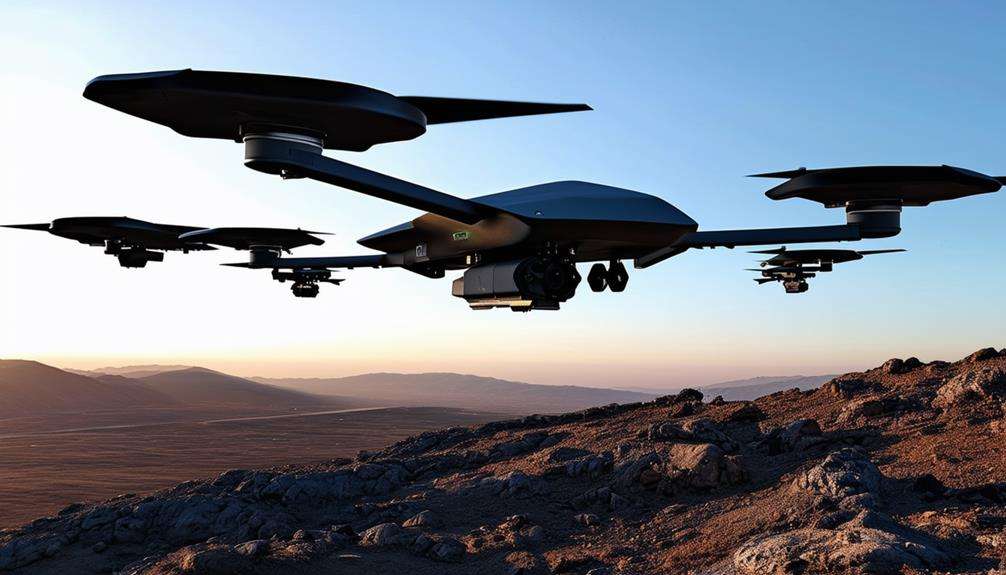
Military and surveillance drones have revolutionized modern warfare and intelligence gathering by providing unparalleled capabilities in reconnaissance, combat, and espionage. These drones vary in size, from small units weighing up to 200 grams for surveillance to large, high-tech machines designed for combat scenarios.
A key feature of military drones is their impressive payload capacity. They can carry heavier loads than recreational or professional drones, making them indispensable for missions requiring advanced weaponry or extensive surveillance equipment.
Military drones typically range from short-range to long-range, with some capable of extending their reach up to hundreds of miles. They're crucial for both combat and espionage missions, offering significant strategic advantages in intelligence operations.
Here are the standout features of military and surveillance drones:
- Reconnaissance: Collect real-time data and imagery to support military operations.
- Advanced propulsion systems: Integration of jet engines for superior performance.
- Versatile power sources: Options include batteries, gasoline, hydrogen, and solar energy.
- Extended operational range: Capable of long-distance missions for thorough surveillance and combat operations.
Conclusion
Drones cater to a wide range of needs, from recreational activities with mini drones to professional-grade applications with specialized models. Whether you're a hobbyist capturing breathtaking aerial footage or a farmer enhancing crop management, there's a drone tailored to your requirements. As technology continues to evolve, even more innovative possibilities will emerge. So, explore the skies and choose the drone that aligns with your passion and expertise. The sky truly is the limit!

